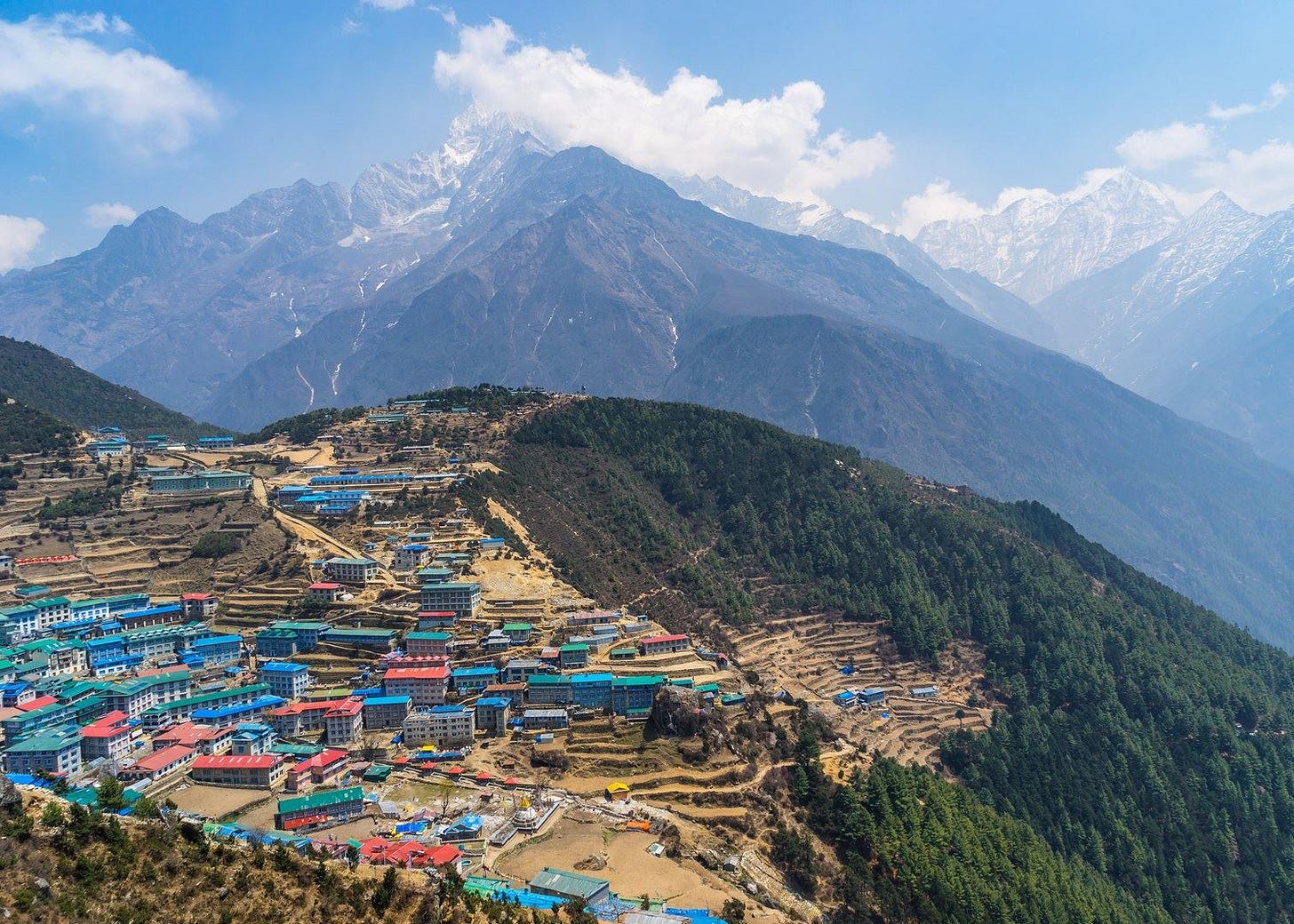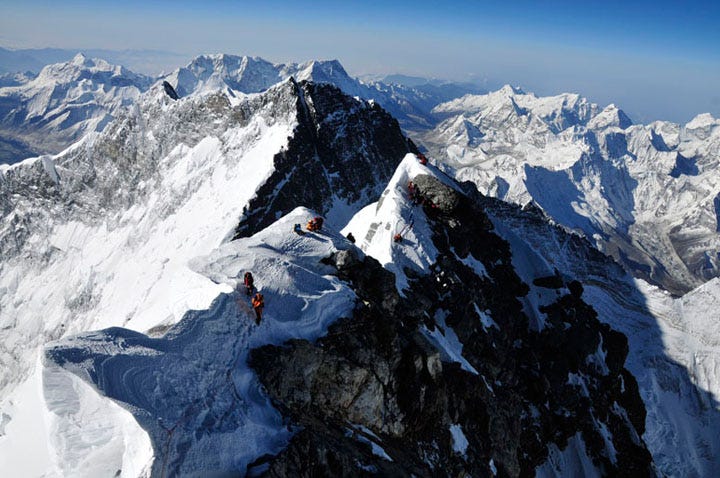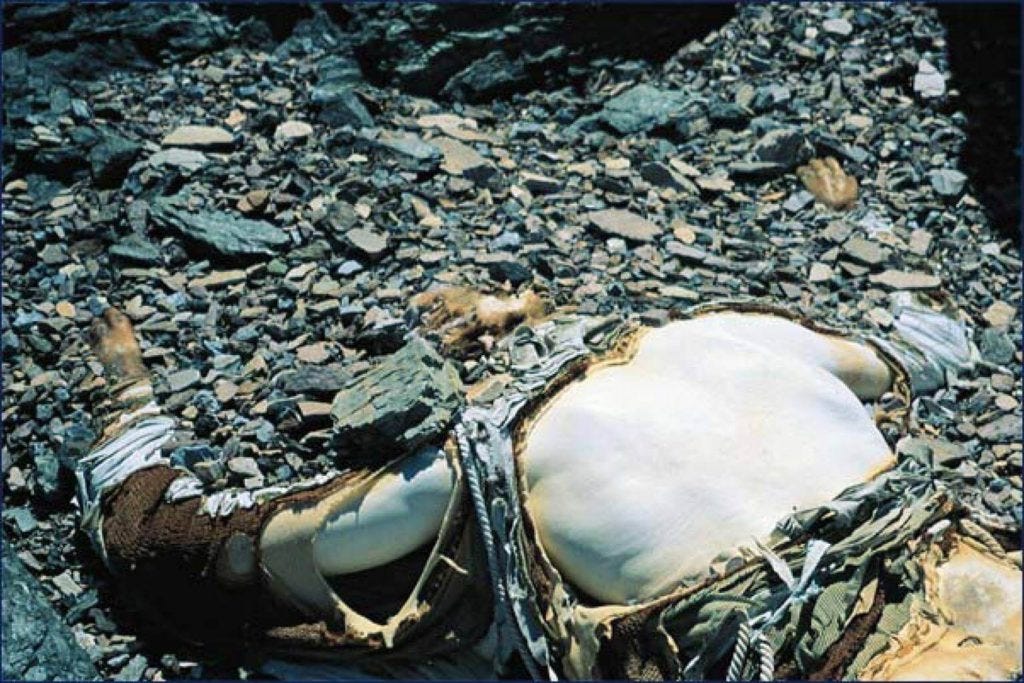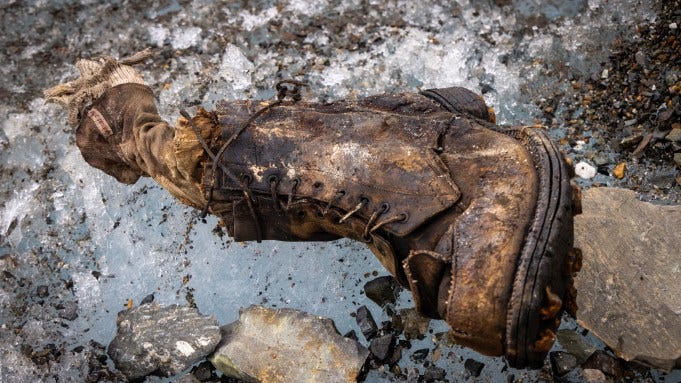In March 1953, six British servicemen stepped off the S.S. Stratheden onto the dock at Bombay. There was a lot to do. They needed to unload 473 bags, weighing a total of 7.5 tonnes, shake off their sea legs, and load up a dusty train to take them deep into Madhya Pradesh. Everything was more difficult in the 38°C heat.
Just a few years before, these servicemen would have come from Britain as commanders, but now they were visitors. India’s first independent government under Nehru was just one year old. On January 20th, Eisenhower had been inaugurated president, his speech heralding the “masses of Asia [that] have awakened to strike off shackles of the past”. More change was on the way. Stalin had just had the stroke that would eventually kill him. “Thrones have toppled and their vast empires have disappeared,” Eisenhower declared.
After the train rides had dropped them in Uttar Pradesh, the soldiers faced a ‘a degenerating ride on a lorry perched on top of mountainous baggage’, as the expedition leader Colonel John Hunt remembered, and then an eighteen-mile march over the ridges which bar entry into the Valley of Nepal. They arrived in Kathmandu to meet with more servicemen from the Commonwealth – from New Zealand, Australia, South Africa – plus a few extra who had flown in from Britain, including Hunt himself. The soldiers shook hands and headed up into the mountains.
Near Namche they employed a team of experienced Sherpa mountaineers, as well as some with less experience to help with the baggage. They made their way eastwards on foot, cutting across the natural lines of drainage from the Himalayan watershed. The path was small and rugged, so they could travel only in single file, meaning the line of walkers stretched back for hundreds of metres. After some weeks, they set up camp on the Khumbu glacier, situated in the valley with the Lhotse ridge on one side and Everest on the other. The ice there is fractured, aggressive and spiky.
More weeks were spent lugging tents, food and oxygen from Base Camp to Camp I, then to Camp II, then to Camp III, and so on, establishing seven in total using ever smaller teams of men. Gaps in crevasses were bridged with 12-foot bamboo poles. Ropes were fixed over rock falls.
Finally, all the supplies were in place. The assault could be made in earnest. On the 26th of May 1953, Tom Bourdillon and Charles Evans made their summit assault on Everest. At 1 o’clock, they gained the South Summit, becoming the first men to stand on the top of the world’s tallest mountain.
They looked along the ridge to the main summit. “On the left, it falls sharply away to the edge of the rocks topping the west face of the mountain,” writes Hunt. “On the right, is an even more abrupt precipice of even greater height; it was masked by cloud.” The summit was only a few hundred metres away. And yet, with their oxygen supply failing, and having taken much longer than expected to reach the South summit, Bourdillon and Evans looked at each other. “It was with some reluctance that they decided to go down.”
Three days later, New Zealander Ed Hillary and Sherpa Tenzing Norgay were on the south summit, and cruised beyond it to make the very top. Hillary turned to Norgay to shake his hand. Norgay threw his arms around Hillary and hugged him. They were the first men to summit Everest.
So they thought. But thirty years earlier, two others may have stood on the exact same spot before Hillary and Tenzing. In 1924, a smaller expedition, funded entirely privately, without the military heft of Hunt’s, without his radio equipment, closed-circuit oxygen or weather forecasting, using hemp ropes, woolen overcoats, and knitted socks, was ready for a summit push.
George Mallory, a 37 year old former schoolmaster, was leading the expedition. In the years before the first World War he had climbed all over the British Isles, as well doing a number of impressive ascents in the Alps which still bear his name. He had a good war, returning to England as a lieutenant, and, perhaps because of this, teaching history at Charterhouse proved to be not quite enough for him. “My mind is in a state of constant rebellion,” he wrote. “I believe that will always be so.”
Restless, yearning for the mountains, he managed to get a place on the first Everest reconnaissance expedition funded by the Alpine Club and Royal Geographical Society in 1921. The team successfully surveyed the Rongbuk glacier and made it up to the North col, before heading back to Darjeeling after two months. Mallory went on the sequel to this trip, in 1922, led by Charles Bruce, but it ended in disaster when an avalanche killed seven men.
In 1924, Bruce took another expedition, but a bout of malaria forced him to step down and promote Mallory to climbing leader. The team on this occasion comprised a total of 13 British and 60 Nepalese. By contrast, Hunt’s 1953 effort would employ nearly 400.
Sandy Irvine was 22 years old when he arrived in Nepal with Mallory. He had been studying engineering at Merton when he was invited onto Bruce’s 1924 Everest expedition, after having impressed on an Oxford University trip to Spitsbergen. Mallory took to him for his strength and ability to fix equipment, and chose him to be his partner for the summit attempt. “Irvine,” wrote expedition leader E.F. Norton in The Fight For Everest, “was big and powerful—with fine shoulders and comparatively light legs.”
On June 8, 1924, Mallory and Irvine left their high camp to make a summit challenge. Noel Odell, an oxygen technician for the expedition, reported seeing them on the ridge, and wrote in his diary that they were “nearing the base of the final pyramid”. But Mallory and Irvine didn’t come down. There was an attempted search, soon called off, and the rest of the party headed back down to Kathmandu.
What happened to them?
There has been much debate about whether Odell’s sighting confirmed they had reached the top or not. Other clues were hard to find. In 1933, one of Mallory’s ice axes was recovered. In 1960, a group of Chinese climbers attempted the route that Mallory and Irvine followed, and concluded that it was difficult, and very likely beyond the capability of the pair forty years earlier.
In 1999, one of the most venerated Himalayan mountaineers, Conrad Anker, took an expedition to find Mallory and Irvine’s body. In the scree of Everest’s north face they unearthed a body lying face down, at about 8100m elevation. Anker and the team spent hours chipping away at the corpse to work out what it was. The identity was confirmed by a name tag on the coat: G. A. Mallory. This was shocking, and beautiful; more than 70 years after his disappearance, the great mountaineer was finally found.
But the mystery was not yet solved. They kept searching for clues on the body as to what might have happened. They found an altimeter but – tantalisingly – the crystal was smashed and the hands missing. For hours they worked, finding some meat lozenges, gloves, and, importantly, some goggles. These were in his pocket, and not on his face, which suggested that Mallory might have died at night, late enough to have done a successful summiting.
There were two things they could not find. First was a picture of Mallory’s wife Ruth, which he had promised to lay on the summit. Why would this, so small and light, so unintrusive, so unlikely to have been taken out and mislaid, be missing from the body for any other reason than that Mallory and Irvine had reached the top? The second thing they didn’t find was a Vest Pocket Kodak camera that Mallory had borrowed. Had Mallory given it to Irvine during their push for the summit? And if they had made it, surely it would have photographic proof?
A few months later, some more mountaineers returned to the site with a metal detector, but still could not find the camera. There were further expeditions in 2001, 2004, and 2007, including one more by Anker himself again. Nothing of consequence was found, and crucially, no sign of Irvine’s body.
For more than a decade, nothing happened. The mystery became solid and staid, without promise of solution. And yet in September 2024, there was the breakthrough that many had assumed they’d never see. A group of mountaineers found a boot which had just thawed out of the central Rongbuk glacier beneath the North Face. On it was a label: “A. C. Irvine’. Inside the boot were the remains of a foot. The team was led by the independently-famous Jimmy Chin, i.e. the director of Free Solo, who is becoming a kind of CEO of world mountaineering.
This discovery is either the prelude to the resolution of the mystery, or the prelude to the classification of the mystery as permanently unsolvable. On the one hand, we now know where Irvine ended up, and so the camera must be somewhere nearby. On the other hand, Irvine’s boot was found melting out of the glacier, and we cannot know how far into the ice the rest of his body has been taken. There is a chance that it is so deep that it might never come out. Our state is thus one of superposition between enlightenment and ignorance.
If the camera is found, and it contains photographs of the summit, it would be a jolt to our historical timelines. The great landmark of humanity’s relationship to geography would have to be revised. There are a number of ways of understanding the scale of the reconfiguration. In one sense, it would be like if Wiley Post, the first man to fly solo around the world, had made his way to the moon instead, something achieved thirty years later, like Hillary and Tenzing were to Mallory and Irvine. Or we can think what it might have been like if the moon landings had happened thirty years earlier: imagine the second World War, but with space rockets.
When you first hear about the Mallory and Irvine expedition, it is easy to lump it into a single category of Everest expeditions which contains both that expedition, plus the successful 1953 Hunt one, as well as the other unsuccessful attempts in 1933, 1938, and 1950. But to do this would be to massively underrate Mallory. The technological gap of thirty years is worth repeating: Mallory couldn’t use radio, and their oxygen tanks only lasted for about half the time that Hillary’s did, and were significantly heavier.
More importantly, Hunt’s expedition was essentially a military operation. It was organised and funded by the British Expeditionary Force, and had access to their equipment, vehicles and logistics. They even considered bringing 10-inch mortars up to base camp and firing oxygen cylinders all the way up the Western Cwm so they didn’t have to carry them. By contrast, the Mallory expedition solicited donations from private individuals.
Confirming that Irvine and Mallory had summited Everest would be the realisation that, in fact, this whole time we have been living in counterfactual history. It would show that a milestone technological and organisational achievement was much later than it could and should have been. Mallory and his terrible equipment and small team achieved just as much as the professionalised, militarised operation of the 50s. It would show that our milestones of social development are contingent and unwilling to be formed into smooth progress narratives. World War I, in which Mallory had fought, was, after all, the war with the most horses in history.
In another way, however, finding that Irvine and Mallory had got to the top wouldn’t change anything at all. Ultimately, they didn’t make it down, and, as Edmund Hillary said, this means they ‘left the job half done’. Summit or no summit, they died, and so we still needed the 1953 expedition to do the thing properly.
So perhaps what we are wavering between is not the simple yes/no of whether Everest was climbed in 1924, but the more complicated question of whether a revision to this particular milestone is a revision to our understanding of human achievement. If we push Everest further back into the past, are we, as a species, more powerful than we thought we were? Or are we simply luckier? Questions such as this about dates and their meaning do matter, because many of the great achievements that we look back on — landing on the moon, reaching the North Pole – were done for their symbolism alone. And time is the material from which such symbols are fashioned.
When asked in the New York Times in 1923 why he wanted to climb Everest, Mallory said some words which have now become famous: ‘Because it’s there’. But the rest of the interview is worth reading. “Everest is the highest mountain in the world, and no man has reached its summit. Its existence is a challenge. The answer is instinctive, a part, I suppose, of man’s desire to conquer the universe.” Of course, climbing a mountain is not conquering the universe. Yet also, on the level that matters, it is.









Thank you. I had no idea Irvine was a Merton man, and I am now even keener than I was anyway for him to have reached the summit
The internet thinks 200 successful attempts have been made without oxygen so I don't regard I & M's lack of technical resources as a knock down argument.
Great write up. Considering all the conditions - of the men, their equipment and variables, it seems unlikely.